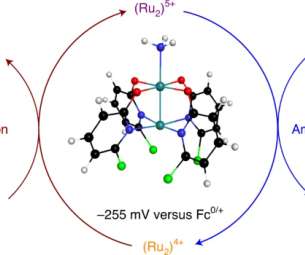UW Madison chemists discover new way to harness energy from ammonia
Green Car Congress
NOVEMBER 12, 2021
A research team at the University of Wisconsin–Madison has identified a new way to convert ammonia to nitrogen gas through a process that could be a step toward ammonia replacing carbon-based fuels. —Michael Trenerry, lead author. This work was supported by the US Department of Energy (DOE). Trenerry, M.J., Wallen, C.M., Brown, T.R.






































Let's personalize your content